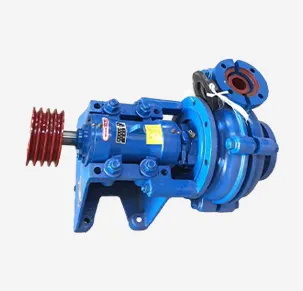Kurdish
- Afrikaans
- Albanian
- Amharic
- Arabic
- Armenian
- Azerbaijani
- Basque
- Belarusian
- Bengali
- Bosnian
- Bulgarian
- Catalan
- Cebuano
- Corsican
- Croatian
- Czech
- Danish
- Dutch
- English
- Esperanto
- Estonian
- Finnish
- French
- Frisian
- Galician
- Georgian
- German
- Greek
- Gujarati
- Haitian Creole
- hausa
- hawaiian
- Hebrew
- Hindi
- Miao
- Hungarian
- Icelandic
- igbo
- Indonesian
- irish
- Italian
- Japanese
- Javanese
- Kannada
- kazakh
- Khmer
- Rwandese
- Korean
- Kurdish
- Kyrgyz
- Lao
- Latin
- Latvian
- Lithuanian
- Luxembourgish
- Macedonian
- Malgashi
- Malay
- Malayalam
- Maltese
- Maori
- Marathi
- Mongolian
- Myanmar
- Nepali
- Norwegian
- Norwegian
- Occitan
- Pashto
- Persian
- Polish
- Portuguese
- Punjabi
- Romanian
- Russian
- Samoan
- Scottish Gaelic
- Serbian
- Sesotho
- Shona
- Sindhi
- Sinhala
- Slovak
- Slovenian
- Somali
- Spanish
- Sundanese
- Swahili
- Swedish
- Tagalog
- Tajik
- Tamil
- Tatar
- Telugu
- Thai
- Turkish
- Turkmen
- Ukrainian
- Urdu
- Uighur
- Uzbek
- Vietnamese
- Welsh
- Bantu
- Yiddish
- Yoruba
- Zulu
Telephone: +86 13120555503
Email: frank@cypump.com
تشرینی دووەم . 06, 2024 20:34 Back to list
Choosing the Right Pumps for Your Septic System Maintenance and Performance
Understanding Septic System Pumps A Vital Component of Wastewater Management
Septic systems are fundamental to managing wastewater in areas lacking centralized sewage treatment facilities. They rely on a combination of tanks and drainage fields to treat and disperse effluent safely. Among the critical components of septic systems, the pump plays a vital role in ensuring the system operates effectively. This article explores the importance of septic system pumps, their types, and the best practices for maintaining them.
A septic system typically consists of a septic tank where solid waste separates from liquids, and a drain field where effluent is filtered into the soil. In some cases, gravity alone isn’t sufficient to transport waste to the treatment area, especially in homes situated on slopes or in low-lying areas. Here is where septic pumps come into play. These pumps move wastewater from the septic tank to the drain field or other treatment areas, helping to prevent backups and system failures.
There are two primary types of pumps used in septic systems effluent pumps and grinder pumps. Effluent pumps are designed to handle the liquid wastewater from the septic tank. They are typically used in systems where the drainage field is higher than the septic tank, requiring the wastewater to be pumped uphill. These pumps are equipped to handle small solids and solids-laden effluent, making them essential for effective wastewater management.
On the other hand, grinder pumps are more robust and designed to handle tougher solids. They grind up solid waste into smaller particles before pumping the effluent to the treatment area. This type of pump is often used in homes with lower elevation or where there is a need for long-distance pumping. By breaking down waste into tiny pieces, grinder pumps help to maintain a smoother flow through the system and prevent clogs.
septic system pumps

Maintaining septic system pumps is critical to their longevity and performance. Regular inspections and upkeep can help prevent unexpected failures, which can lead to costly repairs and environmental hazards. Homeowners should check the pump’s operating conditions regularly, ensuring it is free of clogs and debris. Listening for unusual sounds, such as grinding or clanging, can also be an early warning sign that the pump is failing.
Moreover, it is essential to monitor the septic tank's overall condition. Regular pumping of the septic tank, typically every three to five years depending on usage and household size, helps to remove sludge and scum that can accumulate over time. Neglecting this upkeep can result in the oversaturation of the drain field and the potential failure of the septic system.
Professional septic system pumping and maintenance services are highly recommended to ensure safe and efficient operation. Licensed professionals can conduct comprehensive inspections and repairs, identifying issues that may go unnoticed by the homeowner. They can also offer advice on best practices for wastewater management, ensuring the longevity of the system.
In addition to regular maintenance, homeowners can adopt practices that minimize strain on their septic systems. Avoiding the disposal of non-biodegradable materials down the drain, reducing water usage, and properly managing the household's chemical waste can significantly enhance the overall performance of the septic system.
In conclusion, septic system pumps are crucial for effective wastewater management in homes with onsite treatment systems. Understanding their functionality, ensuring regular maintenance, and adopting responsible practices can help homeowners maintain a healthy and efficient septic system. By caring for their septic pumps, homeowners contribute not only to their household's health but also play a part in protecting the environment. Taking proactive measures ensures the longevity and functionality of septic systems, helping to prevent costly repairs and environmental risks in the future.
-
High-Performance Air Pumps for Sand & Gravel | Efficient Transport
NewsAug.03,2025
-
ISG Series Vertical Pipeline Pump - Chi Yuan Pumps Co., LTD.|Energy Efficiency, Corrosion Resistance
NewsAug.03,2025
-
ISG Series Pipeline Pump - Chi Yuan Pumps | Energy Efficiency&Compact Design
NewsAug.03,2025
-
ISG Series Vertical Pipeline Pump - Chi Yuan Pumps Co., LTD.|High Efficiency, Low Noise, Durable
NewsAug.02,2025
-
ISG Series Vertical Pipeline Pump - Chi Yuan Pumps | High Efficiency, Low Noise
NewsAug.02,2025
-
ISG Series Vertical Pipeline Pump- Chi Yuan Pumps Co., LTD.|High Efficiency&Compact Design
NewsAug.02,2025










